Time to explore the trails
Enjoy ruby flushed sunsets sweeping through hemlocks and fresh rhododendron blooms as you hike through murals of eroded sandstone. Our maps take you there.
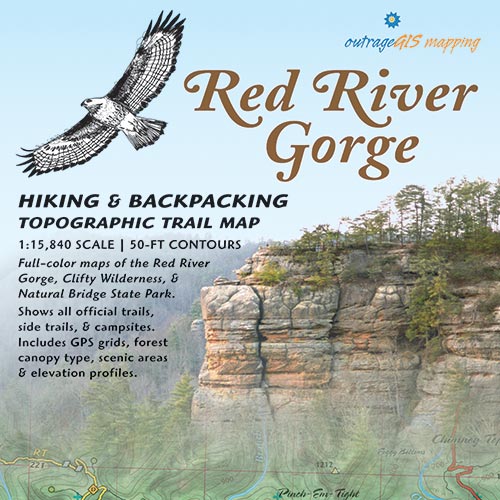 If you’re planning on hiking in the Daniel Boone NF, Great Smoky Mountains NP, Cumberland Gap NHP, or in Kentucky state parks, we might have a map and digital geodata for you. Check out our shop for maps and data you can purchase online.
If you’re planning on hiking in the Daniel Boone NF, Great Smoky Mountains NP, Cumberland Gap NHP, or in Kentucky state parks, we might have a map and digital geodata for you. Check out our shop for maps and data you can purchase online.
We aggregate data from the National Weather Service, National Park Service, and Dry Sky to serve weather stations to help hikers understand weather and road conditions for the Daniel Boone National Forest and Great Smoky Mountains National Park.
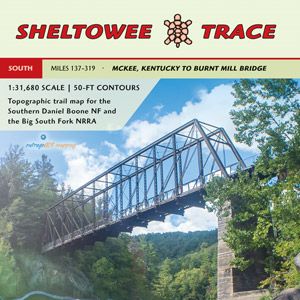 Time for a trip? Looking for a weekend in the woods, alone and untroubled by maintaining your boring social media accounts? Need to get lost for awhile? We understand that instinct and have maps to help. Consider wandering into a landscape of sandstone cliffs, river fords, and bear in the Big South Fork and North Daniel Boone Country.
Time for a trip? Looking for a weekend in the woods, alone and untroubled by maintaining your boring social media accounts? Need to get lost for awhile? We understand that instinct and have maps to help. Consider wandering into a landscape of sandstone cliffs, river fords, and bear in the Big South Fork and North Daniel Boone Country.
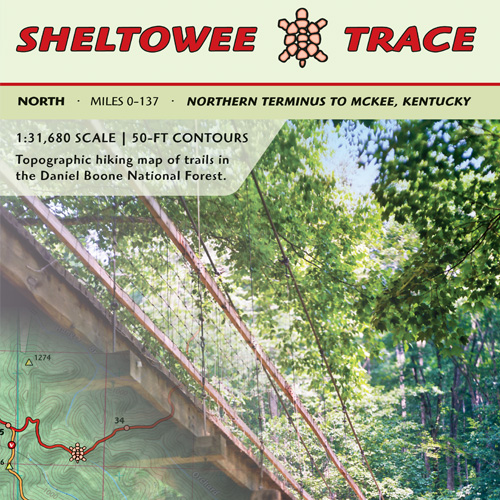 Time to check the weather before packing your gear. Each of our stations (GRSM, CUGA, and DBNF) offer current weather observations, forecasts, webcams, archives, and climate information that updates every 15 minutes. Smell the mountain air, through the internet.
Time to check the weather before packing your gear. Each of our stations (GRSM, CUGA, and DBNF) offer current weather observations, forecasts, webcams, archives, and climate information that updates every 15 minutes. Smell the mountain air, through the internet.
We have more weather mapping projects that we’re tinkering with. Check our GitHub repositiory that shows the radar for the Daniel Boone country and imagery from the GOES-16 satellite.
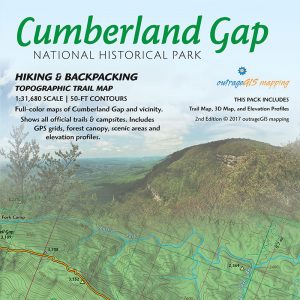
“Thus situated, many hundred miles from our families in the howling wilderness, I believe few would have equally enjoyed the happiness we experienced. I often observed to my brother, You see now how little nature requires to be satisfied. Felicity, the companion of content, is rather found in our own breasts than in the enjoyment of external things; And I firmly believe it requires but a little philosophy to make a man happy in whatsoever state he is. This consists in a full resignation to the will of Providence; and a resigned soul finds pleasure in a path strewed with briars and thorns.”
An account from Daniel Boone, 1784 from “The Adventures of Colonel Daniel Boone” (1784), by John Filson and Daniel Boone.
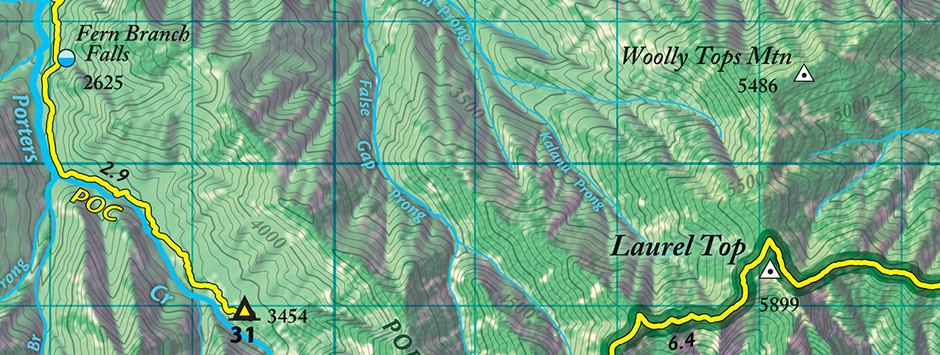
Visit the Great Smoky Mountains National Park with our GPS pack and GeoPDF
Recent blog posts
Interactive web maps have come a long way over the years. First we had slippy maps using raster tilesets – they’ve been around for about twenty years and are incredibly durable. However, once the tileset is rendered, it’s not easy to change the look of the raster image. You will need to render a new tileset and replace the old. Because a tileset can contain millions of images, it’s not a quick replacement.
Gaming technology evolved in the browser and brought us WebGL and vector tilesets. These tileset features have attributes and are rendered programatically in the browser. It’s rather easy to change the appearance of a feature and Mapbox built a browser application, Studio, to create endless styles of maps using vector features. What’s not easy is serving a vector tileset to a client until recently. Libraries like PMTiles bundle a vector tileset into a single file that expose the necessary to the client browser.
More recently, elevation (terrain) tilesets have made 3D maps more exciting to create and explore. Once an elevation is loaded, all other layers, tilesets, etc. are draped over elevation surface. Depending on the resolution of the elevation data, this surface can dramatically change the appearance of the map.
Using an open source mapping library like MapLibre GL JS, a browser can simultaneous consume raster, vector, and terrain tilesets to make a 3D map for any place you have data. Kentucky has excellent data availabilty including lidar data to make high-resolution elevation surfaces. This map uses that lidar data to create the terrain tileset and a shaded relief raster tileset. The vector tilesets for trails, roads, etc. are derived exclusively from OpenStreetMap. The water layers are from the USGS National Hydrological Dataset.
Below is a screen capture of the web page and a link. You might notice that it doesn’t have all of the trails that our printed maps show. We may add those trails in the future, because it would helpful for planning your trip. And, we’re not planning to move to an exclusive mobile app. With all of the advances in mobile technology, we think paper maps are still essential for learning basic navigation and map reading.
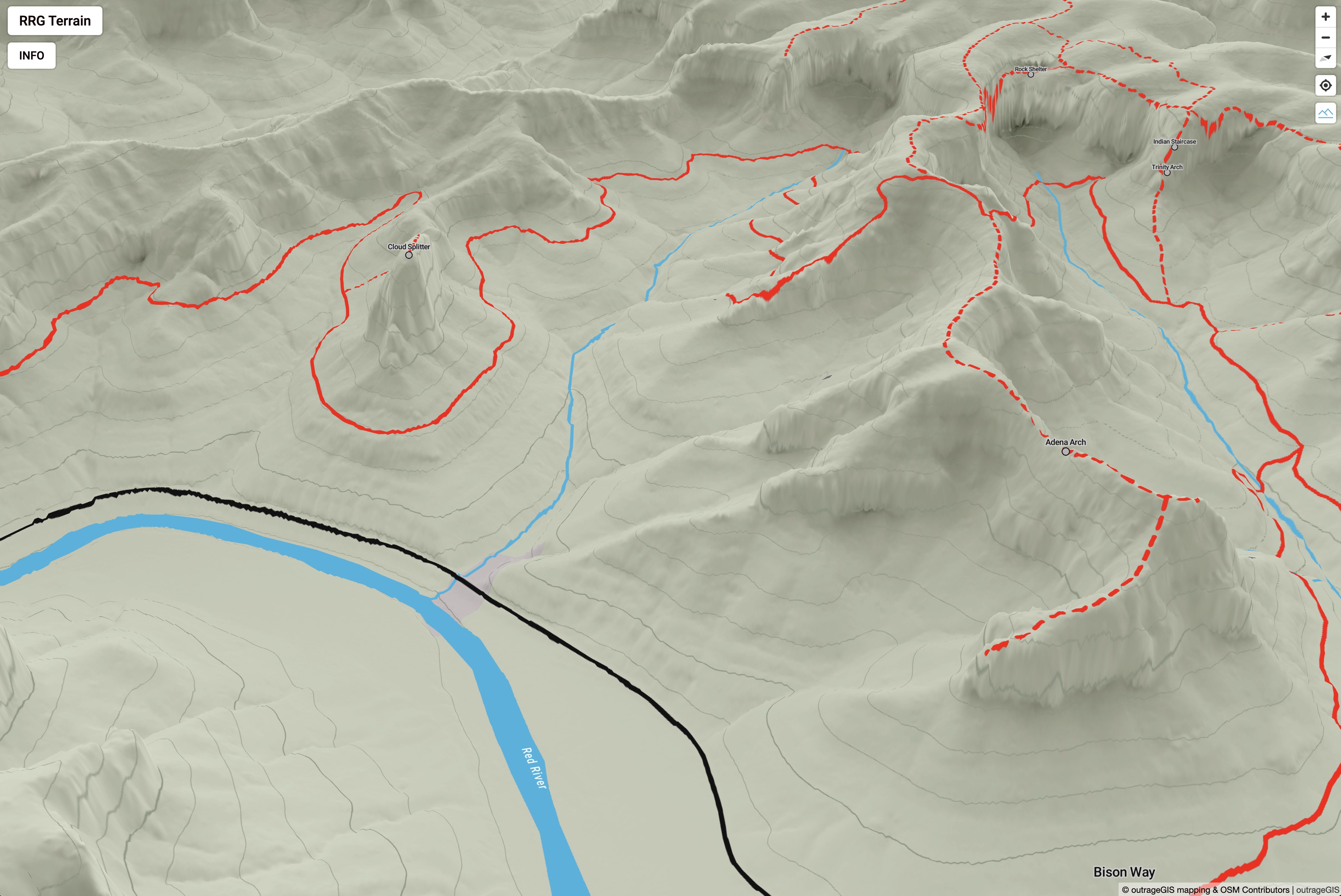
The map can be loaded here: outrageGIS.com/gorge/map
Happy adventures!
If you visit this site often, you likely have a favorite map app on your phone. I certainly do and I have installed dozens of apps over the years. Most focus on placing your location as a dot on the map.
The dot
Any map app that shows your location as a dot on the map fosters a dependence on your exact location. We end up saying, "I am here" instead of asking "Where am I?"
To build strong spatial awareness, we should look at the dot after studying the plain map and doing an exercise in terrain association. Can we orient the map (best done with a paper map, folks) so that map north aligns with observed north? Can we then identify features on the map and estimate their distance from us?
These are questions in topograhic map reading. If you carefully observe your environment and compare its representation on the map, you will not need the dot.
When there was no dot
Let’s say the early 1990s. Before that time, we used paper maps. Soon after, handheld GPS units became popular and only showed coordinates for your position and maybe some other location statistics like speed, elevation, distance & bearing to next waypoint. They were often used with a paper map that had a grid (with linear units on a flat space) or a graticule (angular units on a curved space) that helped a user measure their location.
Using coordinates, we looked at the paper map’s margin for marks that pointed you to a general location. To find the exact location, we looked up and asked, "Where am I?" and compared the map with what we saw. We built a mental map of our surroundings. There was no dot.
An app without a dot?
So, we thought we would kick it back to the 90s and make a browser app that mimics these early devices. Because our maps have detailed graticules and mile markers for the Sheltowee Trace, this app should compliment your journey into topography and map reading. This app is designed for mobile devices and below is a screen capture of a use on an iPhone.
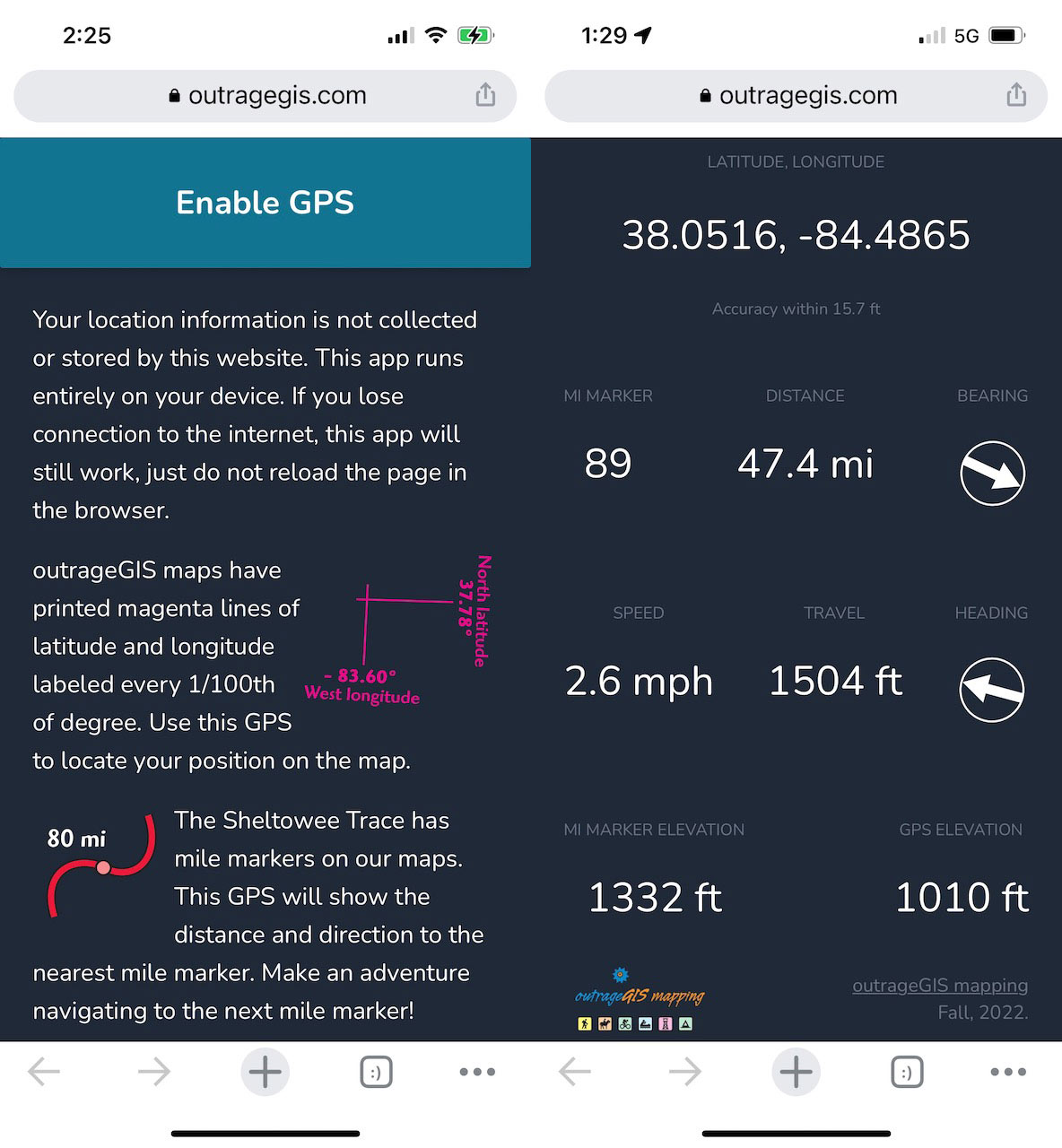
GPS app can be loaded here: https://outrageGIS.com/gps
This app is free, open source, doesn’t need to be installed, and won’t collect any information from you.
Happy adventures!
We have a lot of great raster base map services available in Kentucky and I wanted to access them for my current location when I use my mobile device in the field. While there are many ways to make a mobile map, I wanted use Leaflet JS and build a custom geolocation service using the Geolocation API. Some desired features for the web page:
- The interface should be just the map, with a single button to access the controls
- Location services should record a track of previous locations with distance covered
- Location coordinates should be averaged over a sample period to help with accuracy
- Other information for the current location should be offered on the page, e.g., hourly weather forecasts.
Map cound found here: https://outrageGIS.com/location
The below screen capture shows the control panel for selecting base map and enabling the the location services. It also gratuitously adds content from the last three posts to this forum. (Practicing with Tailwind CSS for potential site redesign.)
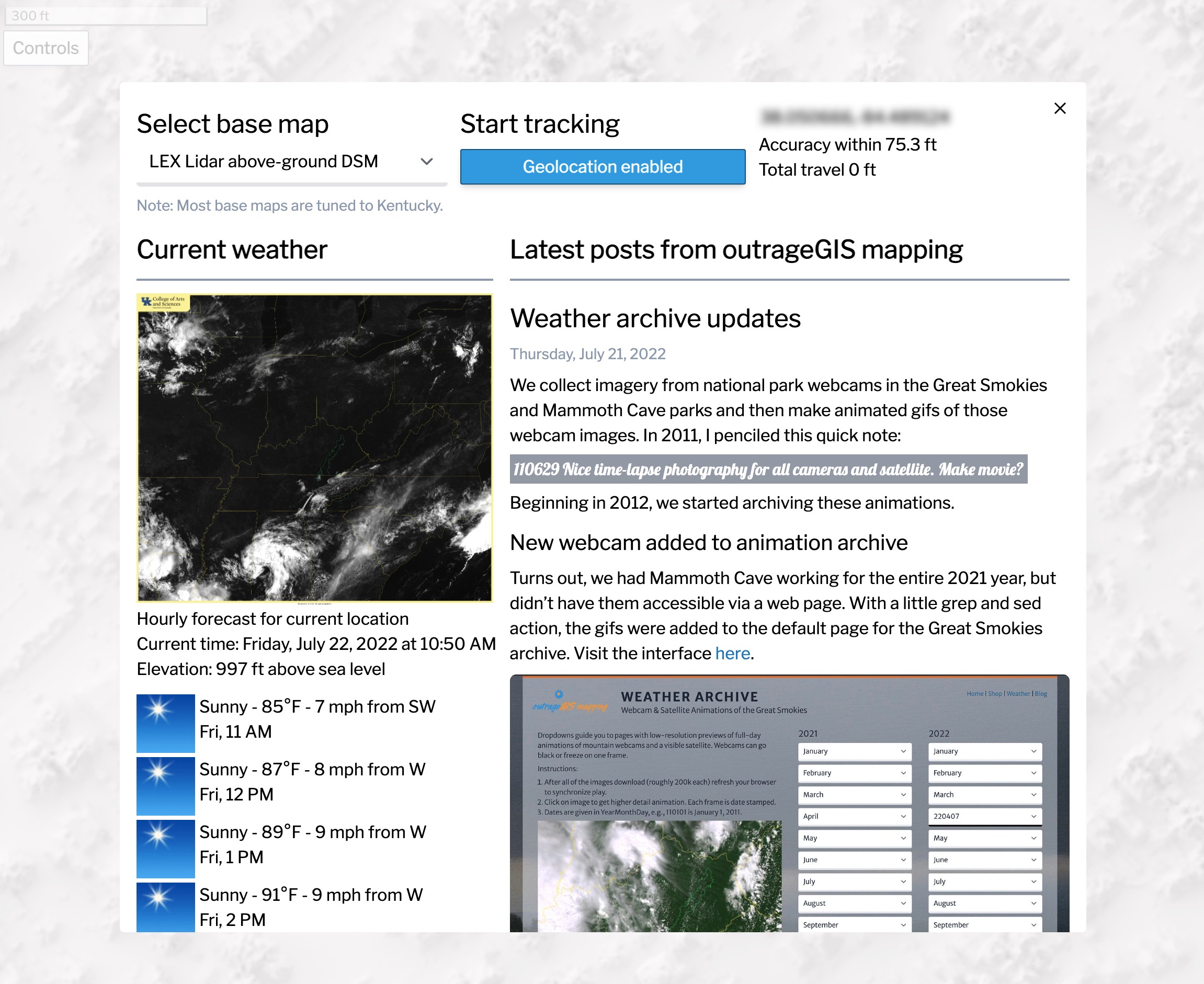
Please feel to add your comments and tell how it works on your mobile device. It has tested on Chrome and Safari mobile browsers.
Some caveats.
- The tracking feature is tuned to walking. If you drive or bike, the track will more generalized the faster you travel.
- Of course, you’ll need to enable location for the page :). I promise that nothing is used or saved from your session. This is a completely client-side app.
- If you refresh your browser, the page is reset and your track is lost. Working on a local database option to save the track.
- This page requires an online connection. Working on an offline version, too.
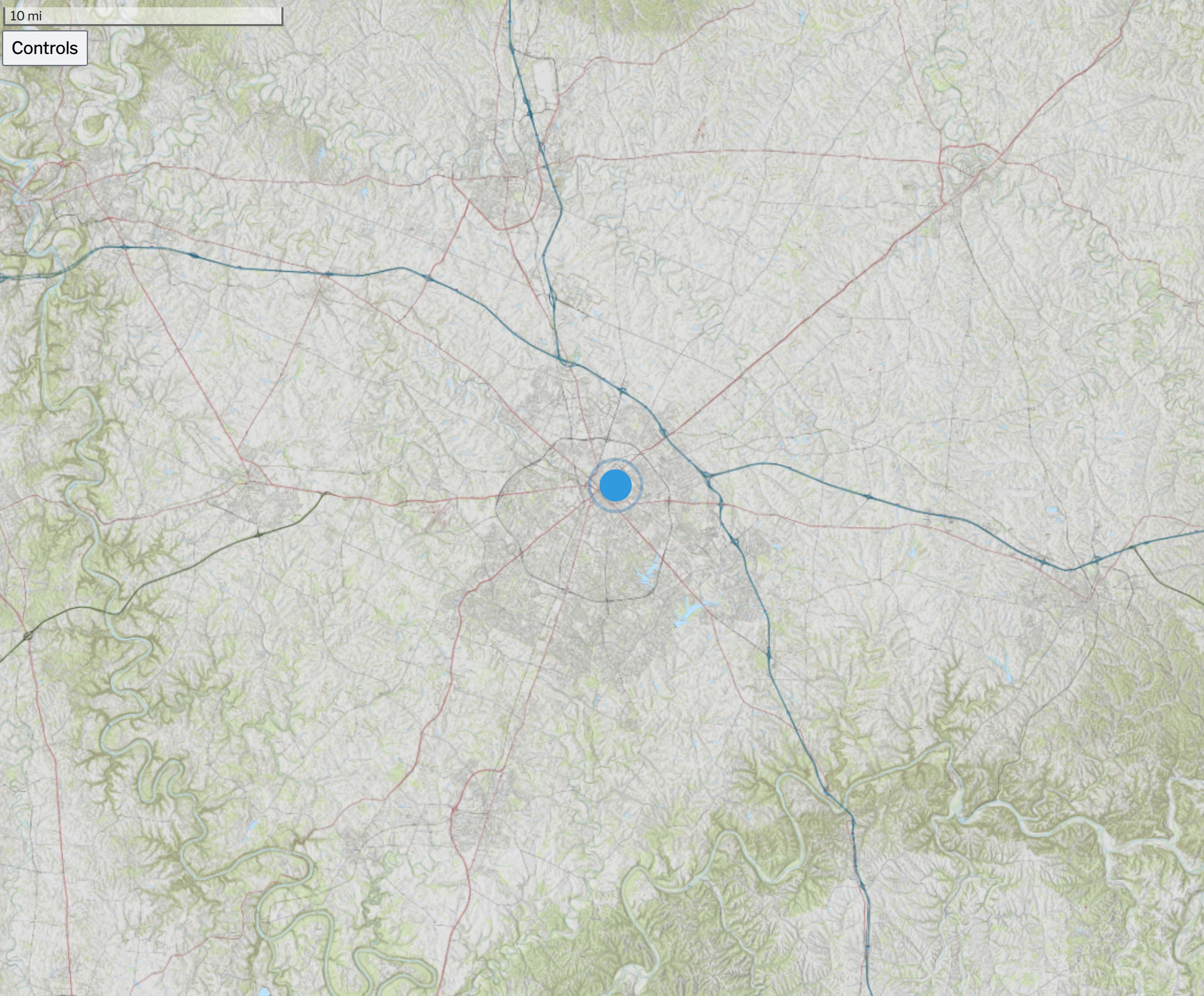 Above is an screen capture of the Kentucky Topo map for the state. Other base maps include, lidar-derived surface models and current GOES-16 imagery.
Above is an screen capture of the Kentucky Topo map for the state. Other base maps include, lidar-derived surface models and current GOES-16 imagery.
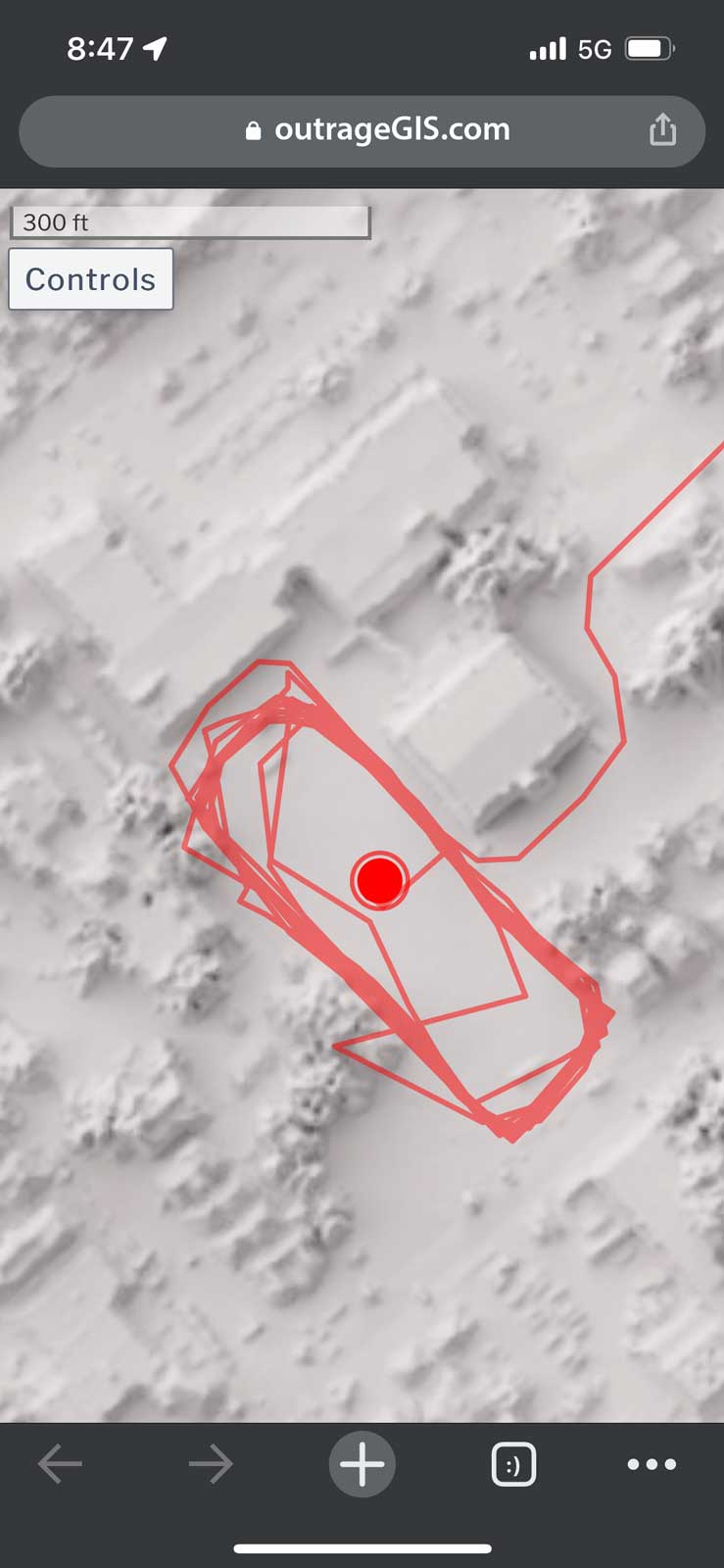 Screen capture of track mapping on a mobile device
Screen capture of track mapping on a mobile device
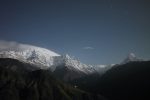
We collect imagery from national park webcams in the Great Smokies and Mammoth Cave parks and then make animated gifs of those webcam images. In 2011, I penciled this quick note:
110629 Nice time-lapse photography for all cameras and satellite. Make movie?
Beginning in 2012, we started archiving these animations.
New webcam added to animation archive
Turns out, we had Mammoth Cave working for the entire 2021 year, but didn’t have them accessible via a web page. With a little grep and sed action, the gifs were added to the default page for the Great Smokies archive. Visit the interface here.
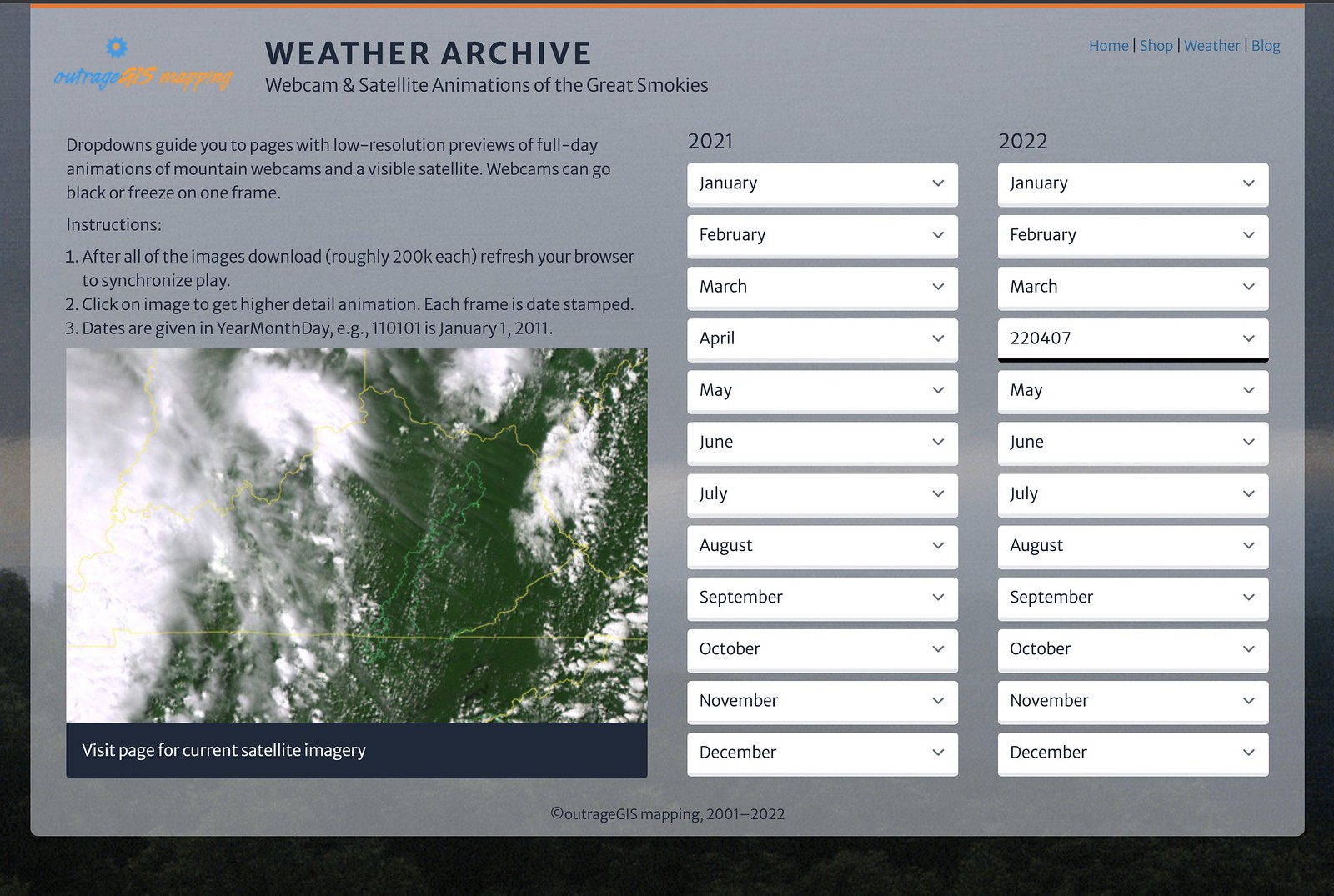
We plan on having at least the last year covered in the archive. At 60 GB a year now with HD cameras, it can get expensive hosting multiple years. I do have the years back to 2012 stored offline.
Over the past spring, we’ve been revamping our popular map for the Red River Gorge. The map should be available in early June. One of the additions is a new Bird’s Eye View map that user lidar elevation data and Blender 3d modeling software. You can view a zoomable image with this link
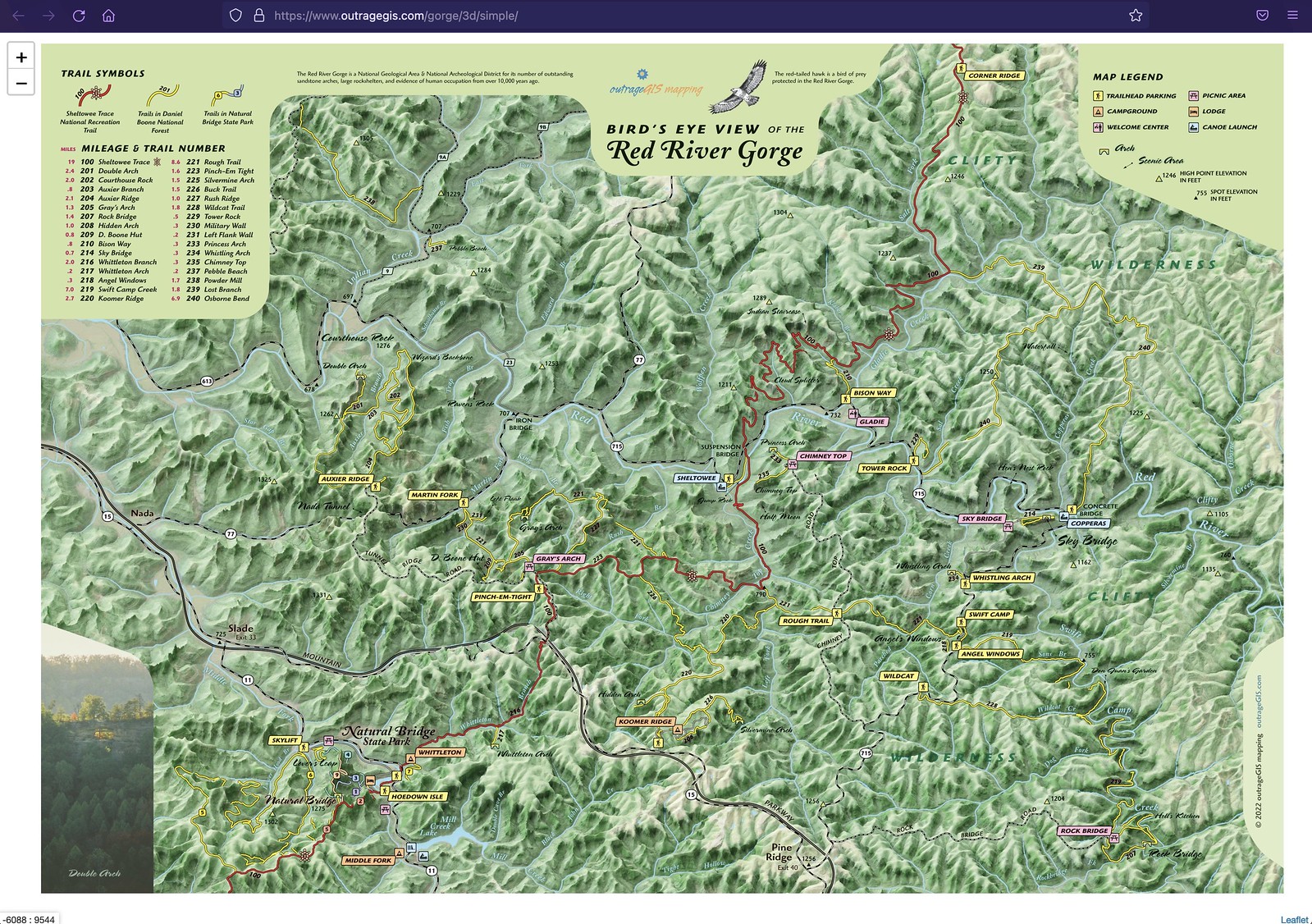
Time to explore the data on a map. The experiment is show block group data for select demographic data, which was used for redistricting. This interactive presentation is a test of concept to show population density. Eventually, an UI element will be added to symbolize block groups by precent population in self-identified racial group – as defined in Census categories.
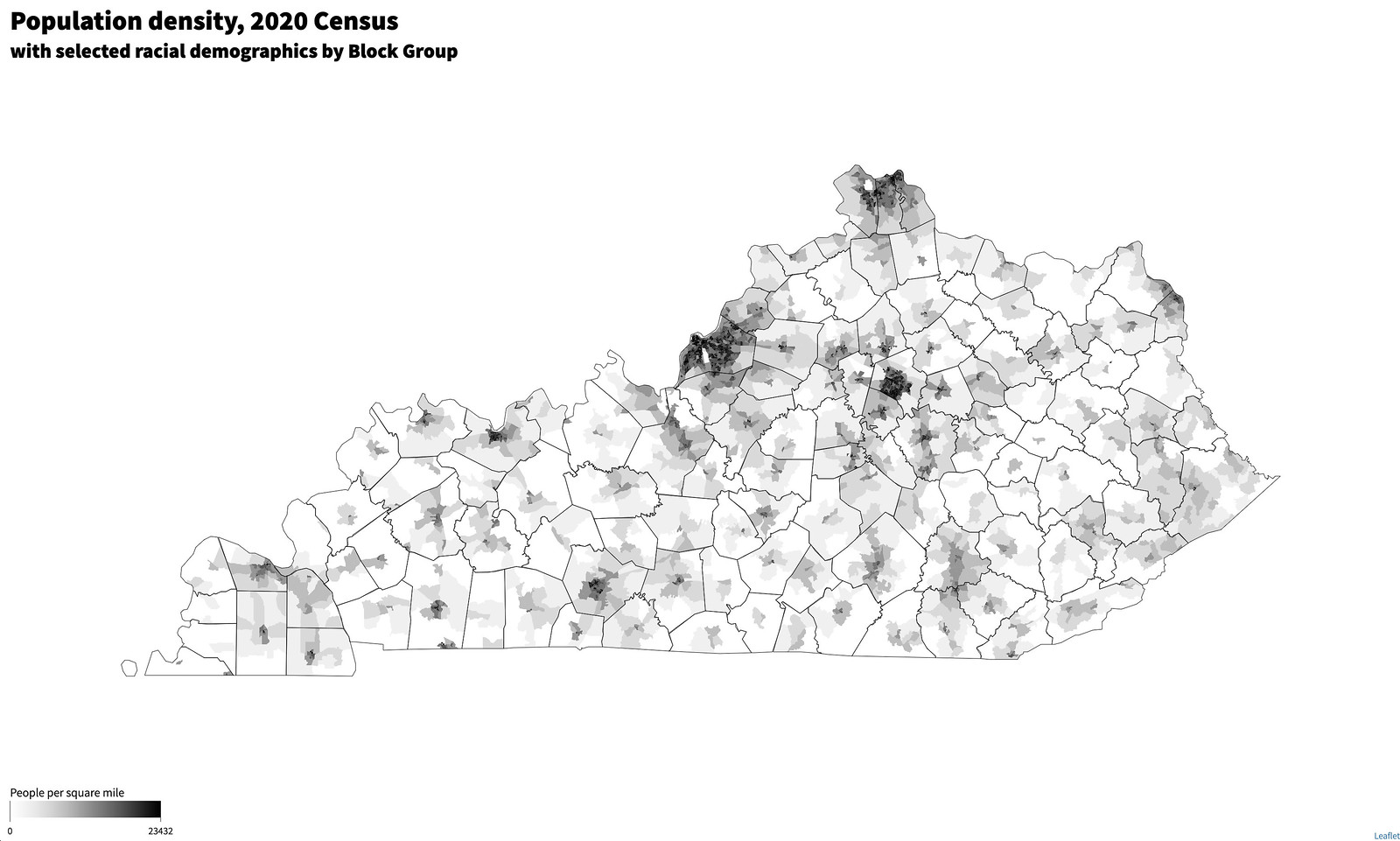
Check out all posts in our blog.
Recent photos
Sample some of the scenes we enjoy from the areas we live and work.
[flickr_photostream max_num_photos=”20″ no_pages=”true”]
Find more travel photos.

Leave a Reply